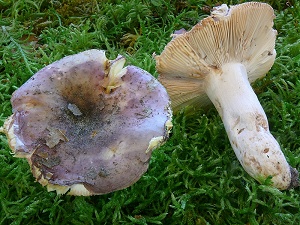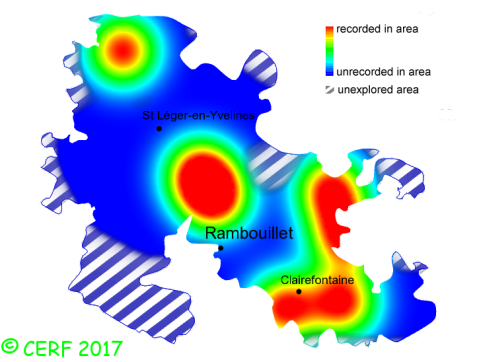| Russula grisea Pers. ex Fr. |
|
|
|
|
|
|
The cap is brown to violet; its margin is striate when mature. The cap surface is smooth, not viscid nor sticky. The flesh is unchanging; its taste is mild; its texture is grainy (breaking like a chalk stick). The gills are cream, free to adnate, crowded . The spore print is cream. This species is mycorrhizal. It grows on the ground, under broad-leaved trees, with beech. The fruiting period takes place from July to November.
Chemical tests : flesh becoming bright orange pink when in contact with iron sulphate; positive reaction to Ga´ac (blue);. Distinctive features : Gills cream, thin and brittle; spore print cream and not pale cream; cap with variable shades of brown and grey, also other colours; flesh turning pink in cap bruises Russula grisea is quite rare and scattered in the forest of Rambouillet, and is occasional, more generally speaking . | ||
|
page updated on 14/01/18

